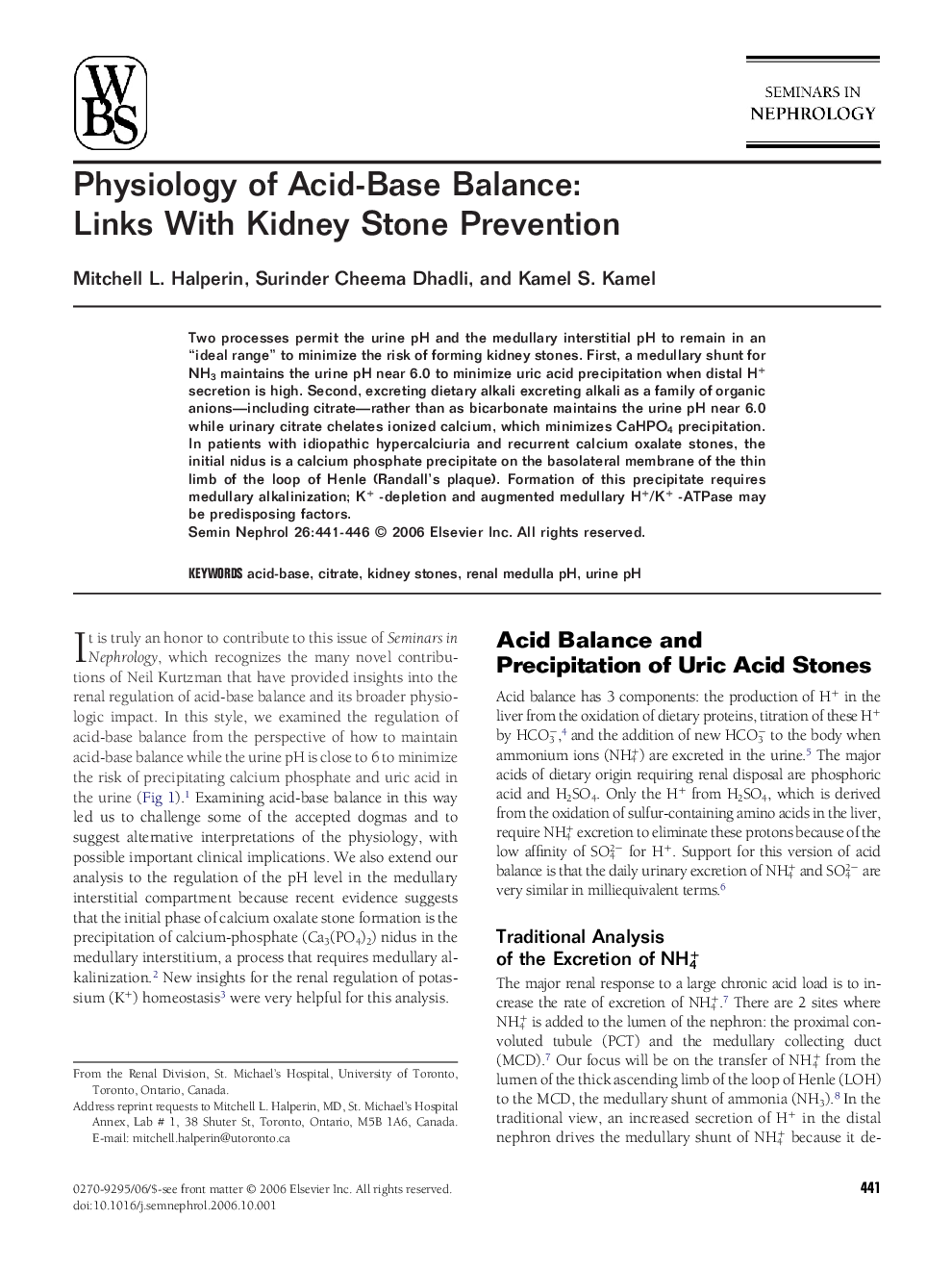| Article ID | Journal | Published Year | Pages | File Type |
|---|---|---|---|---|
| 3897755 | Seminars in Nephrology | 2006 | 6 Pages |
Abstract
Two processes permit the urine pH and the medullary interstitial pH to remain in an “ideal range” to minimize the risk of forming kidney stones. First, a medullary shunt for NH3 maintains the urine pH near 6.0 to minimize uric acid precipitation when distal H+ secretion is high. Second, excreting dietary alkali excreting alkali as a family of organic anions-including citrate-rather than as bicarbonate maintains the urine pH near 6.0 while urinary citrate chelates ionized calcium, which minimizes CaHPO4 precipitation. In patients with idiopathic hypercalciuria and recurrent calcium oxalate stones, the initial nidus is a calcium phosphate precipitate on the basolateral membrane of the thin limb of the loop of Henle (Randall's plaque). Formation of this precipitate requires medullary alkalinization; K+ -depletion and augmented medullary H+/K+ -ATPase may be predisposing factors.
Related Topics
Health Sciences
Medicine and Dentistry
Nephrology
Authors
Mitchell L. Halperin, Surinder Cheema Dhadli, Kamel S. Kamel,
